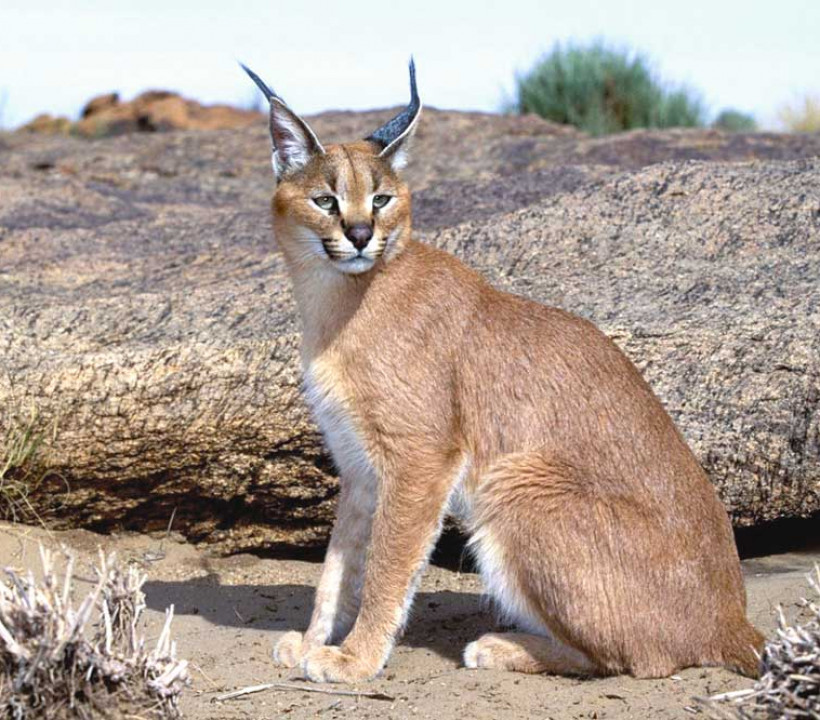Experts discussed ways to preserve wild cats in Central Asia
Careful attitude towards the flora and fauna of Turkmen nature is the basis of the environmental policy of President Serdar Berdimuhamedov in the era of the Renaissance of a new era of a powerful state. In our country, wildlife protection is carried out on the basis of national legislation. Turkmenistan confirmed its responsibility for the fate of rare fauna and flora of regional and global significance by ratifying the UN Convention on Biological Diversity in 1996. In this regard, the country is consistently working to preserve and increase the biological diversity of fauna.
In February of this year, the delegation of Turkmenistan took part in the 14th meeting of the Conference of the Parties to the Convention on the Conservation of Migratory Species of Wild Animals (CMS, or Bonn), which was held in Samarkand under the slogan “Nature knows no borders,” thereby emphasizing that for migratory animals there should be no obstacles.
Among the conference participants were biological experts – representatives of joint international projects implemented in our country together with the Ministry of Environmental Protection of Turkmenistan.
In addition to the plenary sessions at which official documents of the Convention and Strategic Plans for individual species were discussed, parallel events were also organized – separate “round tables” (side events) to discuss special issues.
Thus, the side event “Wild cats of the Great Silk Road”, organized by Turkmenistan together with experts from the Cat Group (CSG) of the International Union for Conservation of Nature, the Central Asian Leopard Working Group (PeLeWG), the Pallas’s Cat Working Group (PICA), and the international organization Conservation X Lab, was dedicated to the conservation of wild cats in Central Asia.

Turkmenistan is home to all the wild cats presented at the side event, namely: the Central Asian leopard, lynx, Pallas cat, caracal, jungle cat, sand cat and steppe cat, many of which are “Red Book” and need special protection. They inhabit the high mountain ranges, foothills and temperate deserts of our country, both in protected natural areas and beyond.
In 2022, experts from Turkmenistan and other countries in the range of the Central Asian leopard developed a Regional Strategy for the conservation of the Central Asian leopard, which was officially adopted at the above-mentioned conference in Samarkand. The Strategy provides exceptional opportunities to improve leopard conservation by creating new protected areas, ecological corridors and implementing measures to reduce human-leopard conflict throughout its range.
Experts from Turkmenistan also supported the inclusion of Pallas’ cat and lynx, which live in the country’s natural reserves, in the Annex of the Convention. Cross-border conservation and cooperation are key to ensuring the future of these cats and the landscapes they inhabit.
Not long ago, Turkmenistan began implementing a new regional project together with Kazakhstan and Kyrgyzstan on the transboundary conservation of the Central Asian leopard and snow leopard. The project is funded by the international organizations Conservation X Lab, National Geographic, Segre Foundation and is being implemented on the territory of the Balkan velayat in the mountains of Greater Balkhan, where the leopard was recorded on camera traps installed by expert scientists and employees of the Balkan Environmental Protection Department.
Data have been collected to confirm the leopard’s habitats in this mountain ecosystem. Employees of the Ministry of Environmental Protection of Turkmenistan, independent experts and scientists are faced with the big task of organizing a new natural reserve to protect this unique mountain ecosystem, the creation of which is included in the National Forest Program of Turkmenistan.

Another side event, “New Frontiers of Ecological Connectivity: From Policy to Implementation,” organized by the Center for Large Landscape Conservation, the CMS Secretariat, the IUCN World Commission on Protected Areas, featured presentations from leaders of various projects implemented in Central Asian countries, including Turkmenistan, and other regions. Thus, the results of the project “Improving the potential and connectivity between the nature reserves of Turkmenistan and Uzbekistan”, which is being implemented in the Koytendag State Nature Reserve, were presented. Within the framework of this project, for the first time in Turkmenistan, work is being carried out to introduce a new innovative approach using SMART monitoring to inspect and improve security measures, as well as biological monitoring in the reserve and reserves of the Koytendag mountain ecosystem. Together with international IUCN experts, seasonal censuses of predatory animals, ungulates and birds are carried out, as well as environmental monitoring, information and educational work with the public and zoning of the reserve in accordance with the recommendations received from international IUCN experts on the nomination dossier “Koytendag Mountain Ecosystem”. This work will continue this year together with employees of the Surkhan State Nature Reserve of Uzbekistan, and by the end of the year a transboundary nomination will be submitted to the UNESCO World Heritage Committee for possible inclusion in the UNESCO World Heritage List.
As a result of the conference, a new Strategic Plan was adopted under the Convention for the period 2024–2032, which determines the main directions of future work.
It should be noted that a huge amount of work in the field of nature conservation, conservation of biological diversity and natural landscapes is carried out in our country within the framework of the “National Strategy on Climate Change” and the “National Forestry Program of Turkmenistan”, as well as large-scale socio-economic programs.
Shirin KARRYEVA,
independent expert, project manager of Conservation X Lab and Center for the Conservation of Large Landscapes
Source: turkmenmetbugat.gov.tm


